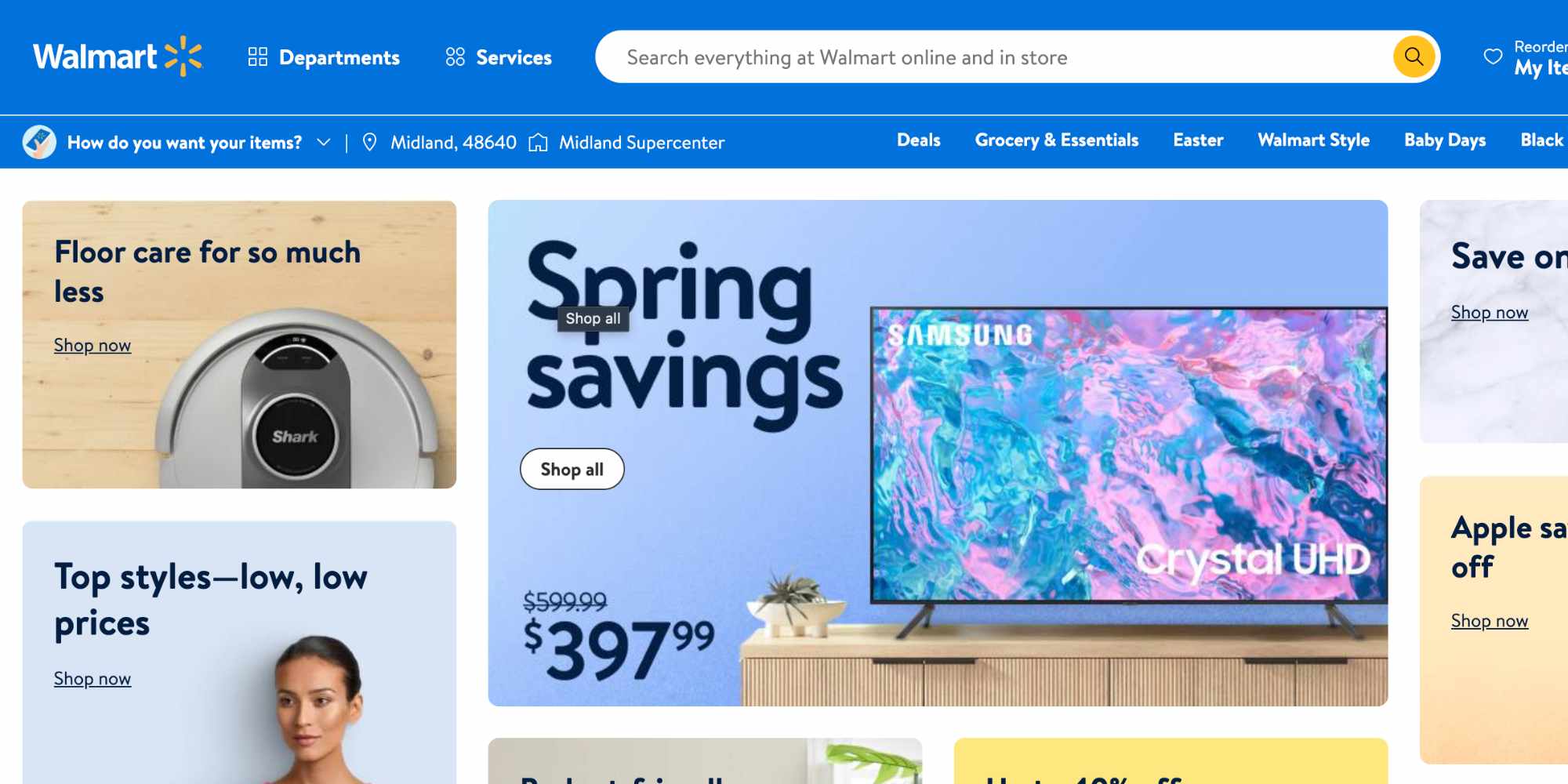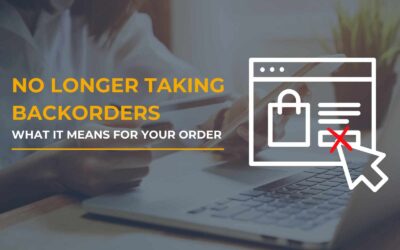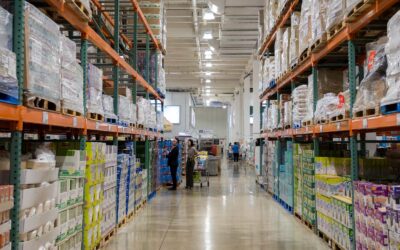
Jump Right In: Challenges in B2B Fulfillment and How to Overcome Them
- Intro to Navigating 3PL Cost Structures
- 1. Logistical Complexities
- 2. Complex Requirements and Constraints for Shipping
- 3. Navigating the Digital Shift
- 4. Direct Sales Threat
- 5. Real-time Management Demand
- Strategic Partnerships: A Case Study of PUMA’s Collaboration with a 3PL
- Summary & Key Takeaways
When fulfilling B2B orders to retailers, businesses face the challenge of adapting to technological advancements and shifting customer expectations. The B2B landscape is marked by a pressing need for speed, accuracy, and flexibility in delivery services, compelling companies to seek innovative solutions for enhancing operational efficiency and meeting the heightened demands of their clientele.
Addressing these challenges head-on through adaptation and innovation is crucial for companies aiming to maintain competitiveness and secure their market position. By integrating new technologies and refining fulfillment strategies, businesses can not only navigate the complexities of the current environment but also uncover opportunities for growth and advancement. As we delve into the common challenges of B2B fulfillment, the following sections will offer strategies and insights for overcoming these obstacles, equipping businesses to thrive in the dynamic world of B2B eCommerce.
Logistical Complexities
The Challenge: Complexities in Logistics and Supply Chain Management
Imagine “Global Manufacture Inc.,” a multinational corporation that produces a wide range of electronic devices. Its supply chain is a vast network of suppliers, manufacturers, and distribution centers spread across the globe. Due to logistical inefficiencies, a critical component sourced from a supplier in Asia is delayed. This delay sets off a domino effect: production lines in Europe stall, waiting for parts that never arrive. As a result, shipments to retailers in North America are postponed, leading to stock shortages and lost sales during the peak holiday shopping season. The ripple effect doesn’t stop there; customer dissatisfaction grows, brand reputation suffers, and the financial impact is felt well into the next quarter. This scenario highlights how logistical inefficiencies can have far-reaching consequences, affecting every aspect of the supply chain from supplier to consumer.

The Solution: Partnering with a 3PL specializing in B2B Fulfillment
To address the challenges posed by complexities in logistics and supply chain management, as faced by “Global Manufacture Inc.,” partnering with a third-party logistics provider (3PL) that specializes in B2B fulfillment offers a strategic solution. This approach not only targets the inefficiencies but also enhances the resilience and responsiveness of the supply chain. Here’s how a specialized 3PL can make a significant difference:
Expertise in Complex Supply Chains
- Global Network Optimization: A 3PL with a robust global presence can optimize the distribution network, ensuring that components and finished products move efficiently across borders. This minimizes delays by leveraging local knowledge and relationships.
- Customized Logistics Solutions: Tailored solutions that consider the unique needs of “Global Manufacture Inc.,” such as handling of electronic devices and navigating international logistics regulations, can significantly mitigate risks associated with global supply chains.
Advanced Technology and Infrastructure
- Real-time Visibility and Tracking: Through advanced logistics platforms, a specialized 3PL provides end-to-end visibility into the supply chain. This technology enables proactive management of potential delays and real-time adjustments to logistics plans.
- Automated Warehousing Solutions: Utilizing automated storage and retrieval systems (AS/RS) and other cutting-edge technologies, 3PLs can expedite the processing of components and finished products in their fulfillment centers, enhancing overall efficiency.
Flexibility and Scalability
- Adaptable Supply Chain Solutions: A 3PL can quickly adjust to changes in demand, scaling operations up or down as needed. This flexibility is crucial for managing the ebb and flow of production requirements and market demands.
- Cost-effective Scaling: By partnering with a 3PL, “Global Manufacture Inc.” can avoid the substantial investments required to expand their own logistics capabilities, especially in regions where they have less presence.
Risk Management
- Diversified Supply Chain Routes: A 3PL can provide alternative supply chain routes and strategies to mitigate the risk of delays. This includes identifying backup suppliers and optimizing inventory levels across the network.
- Compliance and Regulatory Expertise: Navigating the complex regulatory environment of international logistics is a core competency of experienced 3PLs, ensuring compliance and avoiding penalties or customs delays.
Enhanced Customer Satisfaction
- Improved Delivery Times: With efficient logistics solutions, including optimized warehousing and transportation, a 3PL ensures that products reach retailers and customers on time, thereby reducing stock shortages and enhancing customer satisfaction.
- Value-added Services: Many 3PLs offer additional services such as kitting, packaging, and just-in-time delivery which can further enhance the value proposition to end customers.
By leveraging the expertise and resources of a 3PL that specializes in B2B fulfillment, “Global Manufacture Inc.” can significantly improve its supply chain efficiency, reduce risks associated with global logistics, and ultimately enhance its service to customers. This strategic partnership not only addresses the immediate challenges of logistical complexities but also positions the company for sustainable growth and competitiveness in the global market.
Complex Requirements and Constraints for Shipping
The Challenge: Adapting to B2B Buyers’ B2C-Like Expectations
In B2B commerce, brands face the significant challenge of meeting the increasingly consumer-like expectations of their buyers. Influenced by the seamless, fast, and transparent purchasing experiences of the B2C ecommerce world, B2B buyers now demand similar standards from their B2B transactions. These expectations include rapid delivery (often within 48 hours), real-time order tracking, precise order fulfillment, and constant availability of customer service. Given the inherent complexities of B2B orders—which typically involve larger shipments, more substantial paperwork, and intricate logistics—meeting these B2C-like expectations becomes a big task for brands.
Furthermore, B2B transactions require accommodating specific and varied buyer requirements, such as handling smaller or bulkier shipments, providing real-time shipping rates, and achieving EDI compliance, adding layers of complexity to the fulfillment process.

The Solution: Leveraging Technology and Flexibility to Meet Evolving Expectations
To overcome these challenges and satisfy the B2C-like expectations of B2B buyers, distributors must embrace a combination of advanced technology, strategic flexibility, and a customer-centric approach. Here’s how:
Implementing Advanced Logistics Technology:
- Real-Time Tracking Systems: Deploy technologies that enable real-time tracking of shipments, offering buyers visibility into the status of their orders at any time.
- Automated Fulfillment Solutions: Utilize automation in the fulfillment process to increase efficiency, reduce errors, and accelerate the delivery timeline.
Enhancing Flexibility in Fulfillment Strategies:
- Flexible Shipping Solutions: Adopt flexible shipping strategies that can accommodate a wide range of order sizes, from small parcels to bulky items, ensuring efficient and cost-effective delivery.
- Customized Buyer Solutions: Develop the capability to tailor logistics and fulfillment strategies to meet the unique requirements of each B2B client, such as EDI compliance and specific shipping preferences.
Prioritizing Customer Service:
- 24/7 Customer Support: Establish a round-the-clock customer service operation to address buyers’ queries and concerns promptly, mirroring the customer support experience of B2C platforms.
- Consultative Approach: Offer a consultative service to B2B buyers, helping them navigate the complexities of shipping and logistics and making the buying process as seamless as possible.
By integrating these solutions, B2B distributors can effectively meet and exceed the B2C-like expectations of their buyers, turning the challenge of complex requirements and constraints for shipping into an opportunity for differentiation and growth. This approach not only ensures operational efficiency and customer satisfaction but also positions distributors as forward-thinking leaders in the competitive B2B marketplace.

The Solution: Embracing Technology
The silver lining for traditional B2B distributors lies in the wealth of user-friendly logistics platforms available today, designed to bridge the gap between the analog past and the digital future. Platforms like eFulfillment Service exemplify this transition, offering a lifeline to businesses eager to digitalize but unsure where to start. Here’s how embracing such technology can revolutionize their operations:
- Streamlined Operations: With integrated software solutions, distributors can automate order processing, inventory management, and customer communications, significantly reducing manual errors and operational costs.
- Enhanced Visibility: Real-time tracking of shipments and inventory levels ensures that businesses can make informed decisions quickly, enhancing responsiveness and customer satisfaction.
- Global Reach: The online ecosystem opens up new markets and customer bases, allowing traditional distributors to compete on a global stage with minimal additional investment.
- Scalability: Digital platforms can easily scale with the business, supporting growth without the need for extensive physical infrastructure expansion.
- User-Friendly Onboarding: Recognizing the hesitancy of traditional businesses to adopt new technology, platforms like eFulfillment Service prioritize client care and provide comprehensive support during the transition phase.
The journey from traditional to digital should not be a daunting task. By partnering with the right technology providers, traditional B2B distributors can redefine their business models, tapping into new efficiencies and opportunities in the digital marketplace. The key is to take the first step, embracing change with an open mind and a strategic approach.
Direct Sales Threat
The Challenge: Disintermediation of Suppliers and Consumers
Many suppliers, armed with digital tools and direct access to consumer data, begin bypassing traditional B2B channels, opting instead for a straight path to their end customers. This scenario isn’t just a tale of digital progression; it’s a real and present challenge known as disintermediation. The impact on traditional B2B distributors is large: lost sales, diminished relevance, and an existential threat to their role in the supply chain. In this new reality, distributors are left scrambling to find their footing, as the very foundation of their business model shifts.

The Solution: Strengthening Supply Chain Efficiency
To counteract the threat of disintermediation and reclaim their pivotal role in the supply chain, B2B distributors must turn to innovation and efficiency. Here are key technologies and strategies that can help:
- Real-Time Inventory Management: Systems like Oracle NetSuite and SAP Integrated Business Planning (IBP) provide distributors with a bird’s-eye view of their inventory in real-time, allowing for more accurate forecasting, reduced stockouts, and better investment decisions.
- Automated Order Fulfillment: Employing automation within the warehouse not only speeds up the order fulfillment process but also minimizes errors, ensuring customers receive their orders quickly and correctly.
- Advanced Data Analytics: Utilizing data analytics tools can help distributors understand market trends, customer preferences, and operational inefficiencies, allowing for more strategic decision-making.
- Electronic Data Interchange (EDI) and API Integration: These technologies streamline communication between suppliers, distributors, and customers, facilitating faster and more accurate order processing.
- Collaborative Platforms: Platforms that enable better collaboration between all parties in the supply chain can help distributors add value by offering comprehensive solutions rather than just products.
- Customer Relationship Management (CRM) Systems: A robust CRM system enables distributors to maintain close relationships with their customers, offering personalized services and support that suppliers going direct might not be able to match.
By embracing these technologies and strategies, B2B distributors can enhance their supply chain efficiency, becoming indispensable partners to both suppliers and customers. This approach not only mitigates the risk of disintermediation but also opens up new opportunities for growth and innovation in an increasingly digital marketplace.
Real-time Management Demand
The Challenge: Keeping Up with Inventory and Order Management
Consider the case of a hypothetical medium-sized B2B distributor, “TechHouse Wholesale,” specializing in electronic components. With a diverse client base relying on timely deliveries for their manufacturing processes, TechHouse struggles with an outdated inventory system. The system, reliant on manual updates and periodic checks, frequently leads to scenarios where sales personnel unknowingly sell items that are out of stock, leading to delayed orders and frustrated clients. Conversely, overestimations of demand for certain components result in overstocking, tying up valuable capital in unsold inventory. This balancing act, without the aid of real-time data, becomes a daily gamble—risking client satisfaction, operational efficiency, and financial health.

The Solution: Integrating Advanced Systems
The antidote to TechHouse Wholesale’s woes lies in the integration of advanced inventory and order management systems. Platforms, like eFulfillment Service who specialize in inventory managment, offer transformative tools for businesses grappling with similar challenges. Here’s how these types of solutions can create efficiency and reliability:
- Comprehensive Visibility: using a 3PL like eFulfillment Services provides an all-encompassing view of inventory levels, order statuses, and customer demand in real-time, virtually eliminating the risks of overstocking and stockouts.
- Demand Planning and Forecasting: These systems employ advanced analytics to predict future demand based on historical data, market trends, and seasonal fluctuations, ensuring that inventory levels are always optimized to meet customer needs.
- Automated Replenishment: Automatic reordering of stock at predefined thresholds saves time and prevents human error, ensuring that popular items are always available.
- Integration Capabilities: Seamless integration with your existing e-commerce platforms ensures that all departments have access to up-to-date information, fostering collaboration and improving decision-making.
- Scalability: As TechHouse grows, systems like these can easily scale to accommodate new products, markets, and higher volumes of orders, supporting long-term growth without the need for constant system upgrades.
By transitioning to these advanced platforms, companies like TechHouse Wholesale can transform their inventory and order management processes from a source of stress into a strategic advantage. Not only do these solutions minimize operational headaches, but they also enable businesses to meet their customers’ needs more effectively, paving the way for improved satisfaction and loyalty.
Do I Need a 3PL?
Are B2B fulfillment services the key to scaling your business efficiently? Use this simple quiz to find out! Score each of the following eight questions from 1 to 5 (where 1 = Strongly Disagree, 5 = Strongly Agree) to evaluate if a fulfillment service might be a good choice for your company.
Strategic Partnerships: A Case Study of PUMA’s Collaboration with a 3PL

PUMA’s journey from logistical challenges to streamlined efficiency is a compelling case study on the power of strategic partnerships. Faced with rapidly increasing e-commerce demand, PUMA encountered significant obstacles in fulfilling orders. Their existing distribution infrastructure was struggling to keep pace with the surge in online sales, leading to longer cycle times and a pressing need for expanded capacity. This challenge threatened not only customer satisfaction but also PUMA’s ability to scale and meet market demand effectively.
Recognizing the need for a transformative solution, PUMA turned to choosing a strategic partnership with a B2B fulfillment provider. This collaboration was aimed at redesigning PUMA’s fulfillment strategy to address its pressing challenges head-on. The partnership focused on several key areas:
- Optimization of Warehouse Operations: The 3PL provider helped PUMA plan and implement a state-of-the-art fulfillment center. This new facility was strategically located to optimize shipping routes across PUMA’s key markets, significantly reducing order cycle times.
- Scalability and Flexibility: The enhanced distribution capabilities provided by the 3PL enabled PUMA to efficiently scale its operations. This flexibility was crucial in accommodating seasonal fluctuations and the rapid growth of PUMA’s e-commerce segment.
- Cost Reduction: By leveraging the 3PL’s expertise and technology in warehouse automation and inventory management, PUMA realized substantial savings in operational and shipping costs. These efficiencies allowed PUMA to allocate resources more effectively, fueling further innovation and growth.
- Improved Customer Satisfaction: The streamlined operations and reduced order cycle times directly translated into better customer experiences. Faster delivery times and higher order accuracy bolstered PUMA’s brand reputation and customer loyalty.
The strategic partnership between PUMA and the 3PL provider showcases the tangible benefits of aligning with experts in logistics and fulfillment. This collaboration not only solved PUMA’s immediate logistical issues but also set the stage for sustainable growth and competitiveness in the digital marketplace. PUMA’s success story underscores the importance of strategic partnerships in overcoming fulfillment challenges, highlighting how businesses can leverage external expertise to enhance their supply chain and meet evolving customer demands.
Fulfill Orders Effortlessly!
Summary & Key Takeaways: Challenges in B2B Fulfillment
Throughout this exploration of B2B fulfillment challenges, we’ve traversed from the digital shift to strategic partnerships, highlighting not just the hurdles but the innovative solutions at our disposal. The journey from traditional methods to embracing the digital landscape, as seen with traditional B2B distributors adapting to online ecosystems, underscores the critical need for technological integration. Similarly, addressing the direct sales threat through enhanced supply chain efficiency and navigating the complex requirements for shipping with strategic compliance underline the necessity of a proactive approach.
Adapt to the Digital Shift:
- Transition from traditional to digital platforms to enhance operational efficiency.
- Utilize user-friendly logistics platforms for streamlined operations and global reach.
Overcome Direct Sales Threats:
- Strengthen supply chain efficiency with real-time inventory management and automated order fulfillment.
- Use advanced data analytics for strategic decision-making and customer relationship management.
Address Real-time Management Demand:
- Integrate advanced systems like Oracle NetSuite and SAP IBP for comprehensive visibility and demand forecasting.
- Implement automated replenishment and scalable solutions to support growth.
Navigate Logistical Complexities:
- Partnerships with 3PLs specializing in B2B fulfillment can result in efficiency and optimization.
- 3PLs also offer value added services such as kitting, custom packaging, and more.
Tackle Complex Shipping Requirements:
- Use compliance software and fulfillment partners with expertise to navigate shipping regulations.
- Opt for multi-carrier shipping solutions and training programs to ensure strategic compliance and optimization.
Leverage Strategic Partnerships:
- Case study highlight: PUMA’s partnership with a 3PL provider showcased benefits like optimized warehouse operations, cost reduction, and improved customer satisfaction.




0 Comments